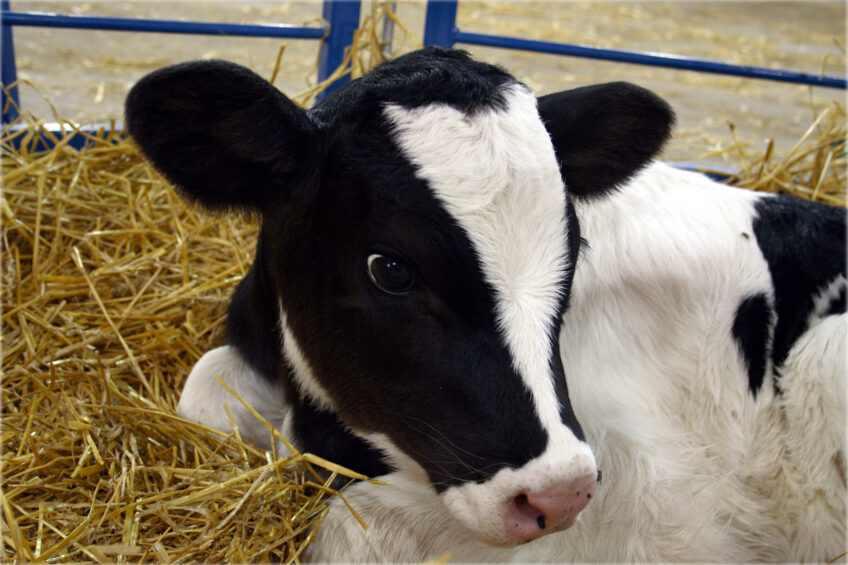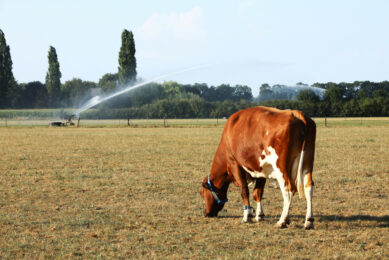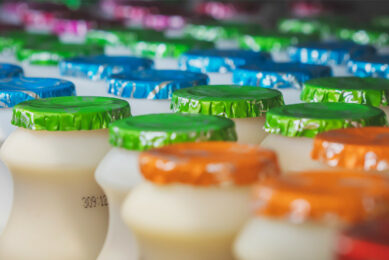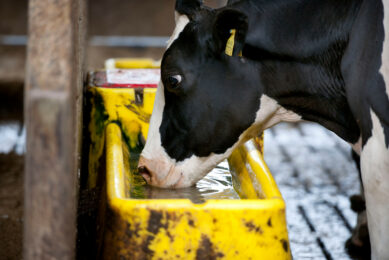Immune status of cattle under thermal stress

The thermal environment of animals has long been implicated in the etiology of infectious diseases due to its effect on host immunity and resistance to microbial invasion. Minimising heat and cold stress should therefore be considered a panacea and a basic tool for most herd health programmes.
Immunity of dairy cows under heat-stress
Mastitis represents one of the primary pathogen-induced diseases of cattle during lactation, and there is evidence that heat stress exacerbates the occurrence of the disease due to its effects on the immune function, resulting in reductions in yield and processing quality.
Likewise, a linkage of uterine disease with heat stress has also been observed for decades. It was found that the percentage of cows with a retained placenta and metritis doubled in the summer relative to the winter. More recent data collected from cows presenting with retained placenta and metritis indicate higher incidence in summer regardless of bacterial load, and greater persistency of the negative impacts of such diseases on performance when they occur in the summer vs. the winter months.
There are 4 possible ways through which heat stress affects immune function:
- Heat stress reduces the release of the hormone oestrogen, which has an immune-enhancing effect on the immune system by modulating B cell function and Th2 response.
- Heat stress suppresses the synthesis and release of cytokines which have important roles in chemically induced tissue damage repair and the modulation of immune reactions.
- As heat burden increases, the phagocytic and burst capacity of the cells declines, indicating a functional decline in immune system resilience with heat stress.
- There is a reduced feed intake under heat stress, which causes depression of the thyroid gland activity and leads to decreased thyroid hormone levels. This can significantly affect the function of the immune system since thyroid hormones have an important role in autoimmunity and pathogen clearance.
Immunity of heat-stressed dry cows
The dry period, or the non-lactating interval between successive lactations, coincides with a period of elevated pathogenic and metabolic disease incidence in cattle. Particularly in dairy cattle, new intra-mammary infections peak around dry-off and calving relative to all other phases of lactation. The incidence rates vary with the season but are typically elevated in the summer season in comparison with winter. The potential for greater pathogen loading is enhanced with the high ambient temperature of summer and negatively affects the cow’s immune function.
It was observed that dry periods corresponding to the summer months increased the incidence of mastitis, respiratory disease, and displaced abomasum, suggesting that high ambient temperatures in summer reduced the immune competence of cows. This effect may alter the response to a post-partum pathogen challenge.
Factors affecting thermal stress-immunity relationship
1. Pathogen type
Viruses are generally less sensitive to the change of temperature while survival and proliferation of bacteria can be linearly enhanced with a temperature rise from 2°C to 30°C.
2. Breed of animal
Holstein cows are impacted significantly less than Brown Swiss, which indicates some genetic variability in resilience to heat stress.
3. Duration of exposure
The immune function is suppressed and the severity of infection increases as the duration of heat or cold exposure is lengthened.
4. Thermoregulatory behaviour
When animals are heat or cold-stressed, they exhibit characteristic changes in behaviour. Cold-stressed animals seek shelters and huddle, thereby increasing animal density, especially when ventilation rates are reduced because of cold weather.
5. Nutrition
In hot weather, animals reduce feed intake to avoid increasing internal heat load. The reduced feed intake, coupled with a lower quality of feed in hot weather, could lead to nutritional deficiency and hence increase the susceptibility of animals to infectious diseases.
By contrast, cold-stressed animals voluntarily increase their feed intake to compensate for the additional heat loss. However, if feedstuffs are inadequately provided, animals may not meet their nutritional requirements, which also reduces host resistance to diseases.
Effects of cold stress
Moderate exposure to cold may not adversely affect the immune status of animals but may rather improve it. With severe cold conditions and prolonged exposure, however, the immune system may be impaired, probably due to changes in the endocrine and metabolic functions. Under this latter condition, animals also get less vitamin D due to reduced exposure to the sun. Vitamin D helps to activate important immune defences of cattle in addition to its role in regulating calcium and phosphorus balance.
Thermal stress and immune status of calves
There are very few reports available to date on the effects of high temperatures on colostrum utilisation by calves for immunity purposes. In one study, there was no significant difference in serum Ig between calves kept under normal temperature (20°C) and those kept at 38°C.
Cold stress, on the other hand, has negative effects on the absorptive function of the intestine, and hence on the concentration of all classes of colostrum Ig in the serum of the hypothermic calves kept at 1°C. Cold stress may also have an indirect effect on the acquisition of protective quantities of colostrum Ig exemplified by the degraded clinical condition of the animals, including their ability to rise and stand and their willingness to nurse. Thus, cold-stressed calves can have normal capabilities of intestinal absorption, yet remain hypo-globulinemic because of cold-induced physical weakness and failure to nurse.
Fat supplementation for cows has been shown to improve the newborn calf’s response to cold stress by increasing glucose concentration in its blood. It is believed that this increased substrate is available for heat generation. There is also some indication that serum immunoglobulins in calves of fat-supplemented cows are higher than in non-supplemented cows.
Mitigation of thermal stress
The thermal effects can be mitigated through modification of the microclimate of animals. The provision of shades, fans, sprinklers, and cold water in summer and windbreaks with adequate litter materials in winter can be of great help. Other management practices, including nutrition and health care, should also be considered.
References are available from the author upon request.
Join 13,000+ subscribers
Subscribe to our newsletter to stay updated about all the need-to-know content in the dairy sector, two times a week.










